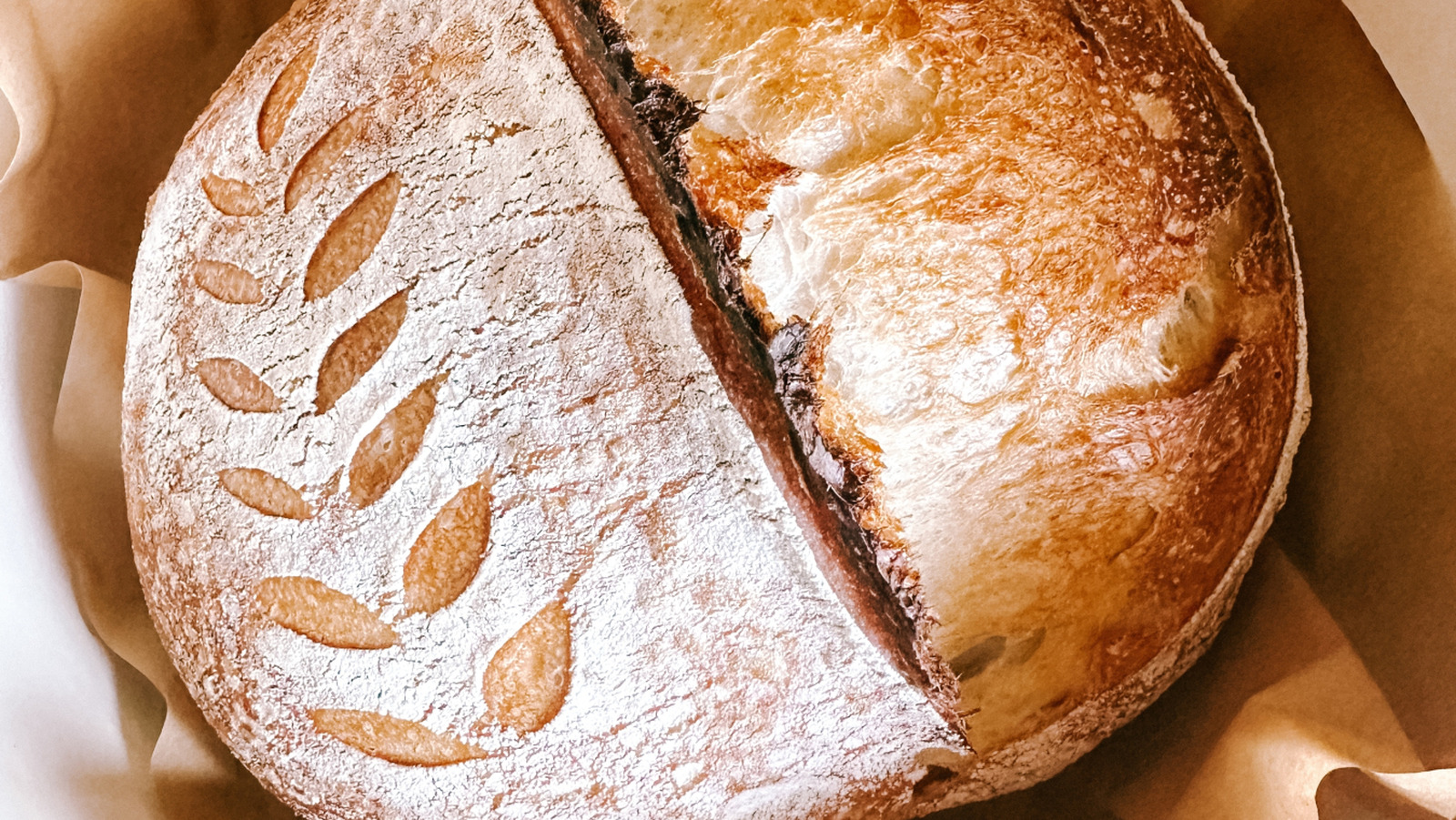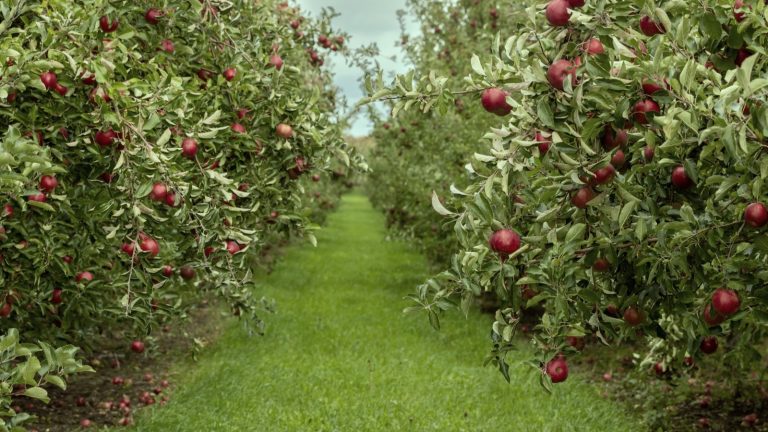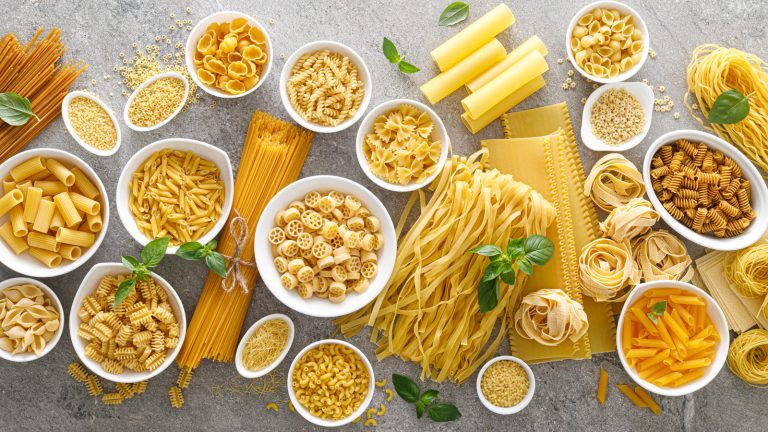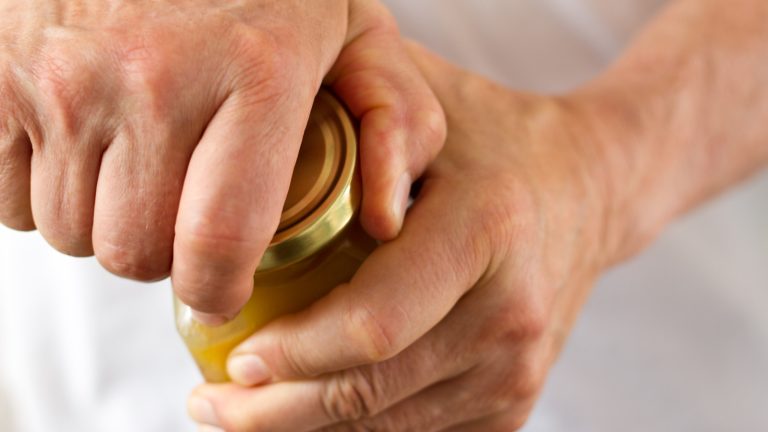If you were an adult during the COVID pandemic, then it’s likely that you got into some niche hobbies. Tiger King, plant care, and baking took a front seat, with many folks making their very own sourdough bread for the first time. This ancient tradition has fluctuated in popularity throughout history, with a steep spike in 2021 that seemed to stick. It was a hobby shared by millennials, baby boomers, and anyone in between, and was a smart way to reduce your grocery bill without compromising flavor.
In fact, homemade bread is cheaper, fresher, and typically of higher quality than many breads you can get at the grocery store. If you partook in the pandemic sourdough craze, then you may have a wealth of knowledge about sourdough and may even know some of these fun facts about sourdough. For the rest of you, prepare for some mind-blowing facts you never knew about sourdough bread.
You might recognize sourdough bread as having a slightly tangy or sour flavor (hence the name), with some loaves being more intense than others. It’s a distinguishing flavor that comes from the fermentation process, much like the tart flavor of yogurt or kombucha. Even as a recipe designer and chef, I was intimidated by the idea of making my own starter, but as it turns out, once you get the hang of it, sourdough bread making is well worth the effort. All you need is flour, water, salt, and a sprinkle of patience, and you’ll be an expert in no time.
Some gluten-free folks can eat it
Now, before I get too many people’s hopes up, those with celiac disease or a wheat allergy are likely to still react negatively to sourdough bread. However, some experts say it may provide hope for aiding the development of gluten-free products. You can, however, make a gluten-free version, or even purchase gluten-free sourdough bread. Some folks with gluten sensitivity, however, have noticed that they don’t have nearly as intense a reaction to sourdough bread as they do to other kinds of bread. As it turns out, there is some science to back this up. So, for those with gluten sensitivity, it’s time you get baking.
The reason sourdough bread may still work for a gluten-free diet has to do entirely with the breakdown of gluten proteins. Sourdough bread is fermented, which gives it that unique and unforgettable flavor. This fermentation helps sensitive guts process the proteins and reduces some of the natural toxicity that fosters a negative reaction, according to the Mayo Clinic. This happens if sourdough is made the old-fashioned way, with extended fermentation times and an established starter. The more fermentation and breakdown, the easier it is on your gut if you have gluten processing difficulties.
Sourdough starter hotels exist
There are many facts you never knew about sourdough bread, but I bet this one will blow your mind. You know, when you go out of town on vacation or business and you might get a house-sitter to water your plants and feed your dog? Perhaps you have a trusted doggie kennel or family friend where you drop off your pups until you return. Well, what about your sourdough starter? Folks with an established starter know that they need love and attention just like any other living thing. They must be fed, watered, stirred, and sung to at bedtime. Well, maybe the last one is a stretch. But if you’re out of town, who will watch your starter? Luckily, sourdough starter hotels are starting to pop up around the world.
Supply and demand is a great way to understand just how much people are into their sourdough these days. And the trend isn’t just in the United States. Sourdough is appreciated all over the world, and in the Nordic countries, they take starter-care seriously. There is a starter hotel in Sweden, with another in Denmark. When will we see one pop up in the United States? Likely soon, with the rate of popularity that the homemade bread is gaining. Until then, you’ll just have to trust the neighbor’s kid or your brother-in-law to keep the little guy thriving while you’re enjoying some well-deserved relaxation and sunshine.
Sourdough has an ancient history
Although sourdough seems trendy and shiny-new, it’s actually been around since an estimated 1500 BC, but may go back even further. The oldest loaf of unleavened bread ever discovered is estimated to date back to 3500 BC. Like many traditions stemming from ancient cultures, it is suspected that sourdough may have begun in Northern Africa, specifically Egypt. Egyptians are thought to be the first to make leavened bread, meaning bread that rises. Sourdough starter is referred to as “wild yeast” as it’s made by essentially letting flour and water sit out at room temperature, creating bacteria that help the mixture develop bubbles.
Some ancient Egyptian hieroglyphics even depicted the sourdough making process, as it was an important part of both their culture and diet. Since then, sourdough fueled the Roman Empire, was a staple during the Middle Ages, and you can even find mention in the New Testament. The maintained popularity of sourdough is likely because it’s cheap and simple to make, filling, and of course, delicious. And let’s be real, who doesn’t like bread?
Sourdough comes in all shapes and sizes
Mention sourdough, and you’ll likely have an image in your mind of a crunchy, chewy outer crust with a fluffy, chewy, soft inside, filled with little pockets of air. This style of sourdough, referred to as San Francisco sourdough, is wildly popular, but there are so many other styles out there. In fact, sourdough can look like sandwich bread, Wonder Bread, or even come stuffed with nuts, herbs, and oils, or sprinkled with seeds.
The one similarity across the board is those little air pockets, or holes in the bread. It really is the Swiss cheese of the bread world, and those air pockets can get rather large. These air pockets are created by the bacteria caused by fermentation, similar to the bubbles you enjoy in kombucha. So, whether you are enjoying a chewy crust, a crunchy crust, an oval loaf, a sandwich bread slice, or dinner rolls, those little pockets of air will tip you off, along with that slightly pleasing sour flavor that you’re tangling with none other than sourdough bread. You can find a variety at your grocery store, and we’ve ranked the worst to best sourdough brands out there so you can get munching.
You can flavor sourdough bread
Your basic loaf of sourdough bread can be delicious all on its own, but once you’ve mastered the recipe, it might be fun to experiment a little with some additional flavor. Like focaccia, which is often dolled up with herbs, oils, seasonings, and even vegetables, sourdough can handle some tag-alongs. Because of the strong flavoring that comes across as tangy, but also earthy, I recommend just about any ingredients you’d enjoy on a pizza. Heck, you could even take the sweet route and fold in some cinnamon, honey, and chopped pecans.
Essentially, all you need to do to stuff sourdough is after it’s rested and is ready to bake, stretch it out so it remains fluffy but flat, and spread your toppings. Next, roll or fold the dough so the stuffing is hidden inside, shape it, and bake. This kale pesto swirled sourdough recipe is a great place to start if you’re not quite confident selecting your own ingredients. The kale, garlic, and nuts bring the perfect balance to the nutty and tangy loaf. Flavored or stuffed bread falls somewhere in between calzones and plain bread, and is the perfect bread to bake to impress your friends at a dinner party or potluck dinner. When it comes to culinary creativity, you can layer in the flavor. It’s time you rise to the occasion. Seriously, you’ll have loaves of fun making it.
Sourdough starter is alive
While most people are aware to some degree that bacteria are a living thing, it’s sometimes hard to fully wrap our heads around yeast being alive, which in turn, makes our sourdough alive. Perhaps an off-putting concept, but once baked, the yeast dies. Its main job is to help the bread rise, so once you create your sourdough starter, you’ve taken on some responsibility. That’s right, you’ve got another mouth to feed. I saw a post about sourdough starter being a tamagotchi for people in their 30s, and it couldn’t be more true. Be honest, did you name your sourdough starter? Well, you’re not alone. As fewer young adults choose to have children, pets, plants, and sourdough starters have received an influx of love and attention. It’s about time!
There is some energy and effort that needs to go into keeping your starter alive, and that means keeping it well fed and hydrated. Each time you feed it, the microorganisms grow as the bacteria feed off of the sugars and starches in the flour, and more bacteria are introduced. When you’re establishing a new starter, it needs to be fed at least once a day while it’s living at room temperature. However, once it’s fully established, you can transfer it to the fridge and the sourdough starter can be fed as few as once every two weeks. Once you’re ready to bake, up the meals to about twice a day, starting a day or two before, to help re-activate it.
Sourdough starter can die
Just like sourdough starter is alive, it can also die. I am guilty, myself, of a cold-blooded starter killing during my early days experimenting with sourdough. There are plenty of ways you can accidentally kill your starter, which can be quite devastating if it’s taken a while to establish, or if you were trusted to watch over a friend’s starter. If the starter is well established, it’s harder to kill, but it does happen. Most of the time, starters die if they aren’t fed or watered. Luckily, at least some of the starter can likely be recovered. However, if you see any signs of mold, it’s time to toss it and start fresh.
So, how can you tell if your sourdough starter is dead? First, take a whiff. Sourdough starter was never the best-smelling thing in your pantry or refrigerator, but if it smells like alcohol, then it’s worth investigating. Next, take a look. Is there a watery layer on top that blackens over time? The watery layer can be either tan or clear. Are the bubbles that were once thriving totally gone from your starter? If any of these are the case, try to reawaken it by feeding it once or twice a day. But if it doesn’t develop those bubbles, or if it becomes discolored, then it’s time to plan the funeral. If you’re unsure, ask an expert or play it safe and start fresh, as consuming mold can be dangerous and even in some cases, even deadly.
Sourdough promotes a healthy gut
We’ve talked a lot about the bacteria in sourdough starter, which can sound intimidating to anyone who doesn’t fully understand the science behind it. The easiest way to think about it is that these bacteria are good bacteria, like the probiotics you might take in supplement form or enjoy in yogurt. When your gut microbiome is thriving, it is filled with good bacteria that feed on fiber to help all systems function properly, which then extends to the health of the rest of your body.
Because sourdough bread contains probiotics, eating it will equip your system with immunity-fighting properties that can kick butt against viruses, fungi, bacteria, parisites, and an overgrowth of yeast. Building up your gut microbiome does more than just help keep things regular in the bathroom. Balanced guts are linked to better heart health and better mental health. So, if your body is feeling out of whack, a good place to start is at the center. Load up on sourdough bread and other forms of probiotics, along with plenty of fiber and antioxidants, and you may just start to feel well-balanced. You have one body; treat it with love and respect.
Sourdough had a resurgence of popularity during COVID
As we know, sourdough has an ancient history. It has fluctuated in popularity since 1500 BC, and recently there has been a resurgence in the United States. This popularity isn’t just with consuming sourdough, but with making it from scratch. During the COVID pandemic, many people were feeling lonely, lost, and scared. Time seemed to slow down, and unique hobbies piqued the interest of those who may have otherwise not had the time. Sourdough baking was one of those hobbies, and gave isolated people something to look after and care for. In addition, there was a yeast shortage, so sourdough was one of the only viable options.
As restaurants, grocery stores, and bakeries opened up, you’d think sourdough would take a nosedive, but years later, people are still enjoying sourdough baking at a steady rate. Personally, I’m not surprised. Once you get hooked, it’s hard to go back to Wonderbread, and there is nothing like the smell of freshly baked bread to fill your home with. In a quickly developing world, where the internet and smartphones keep us on our toes in a constant rush, it’s nice to take a step back and enjoy something as simple as bread baking. And with the prices of groceries these days, it’s a wallet-friendly option as well.
Sourdough isn’t just for making bread
Did you know that sourdough doesn’t just come in bread form? Yes, sourdough is traditionally used for breadmaking, and it’s the most popular form of the dough, but you can use sourdough for so many other foods. If you’re unsure about what you could use sourdough for, consider anything that rises. Think cinnamon buns, waffles, and pancakes.
The best part of this is that you can kill two birds with one stone. Instead of throwing away your discard, use it in your baking. There are endless ways to use sourdough discard. Use it in your pizza dough, muffins, or cake. What about crackers, pretzels, or scones? If it needs to rise, you can use discard. Discard is the overflow of the sourdough starter that needs to be removed so you can keep feeding your starter as it grows. Your baked goods will have a hint of that tangy sour taste while rising beautifully. Check out recipes online like this sourdough ingredient fluffy waffles recipe, or use about 1:3 sourdough discard to flour in your general baking, depending on your desired results.
Stale sourdough can be repurposed
Since many people use sourdough for sandwich bread, it’s hard to think of it in any other capacity. Once it goes stale… what can you do with it? Luckily, even though sourdough has a particular flavor, it can be repurposed into many different dishes, both sweet and savory. Consider using your stale sourdough to make sourdough stale French toast or monkey bread. What about sourdough bread pudding or croutons? It doesn’t need to be Thanksgiving to consider making stuffing.
Blend them up to make breadcrumbs to bread your chicken, eggplant, or stuff into mushroom caps. Have you ever made ribollita? If not, this is your sign to make the dreamy Italian soup and use up your stale sourdough bread. Brunch folks should consider using it in a strata. The reason I prefer a crispy sourdough to typical pre-packaged sandwich bread for these recipes is that it’s chewier, doesn’t dissolve in liquid as easily, and has that slightly tart flavor that distinguishes it from the crowd. Never let a single bite of your homemade sourdough bread go to waste again. But of course, if there are signs of mold, then it’s time to toss.
Sourdough was a staple for miners
It’s easy to think of modern-day sourdough starters being coddled by their millennial parents, who have named them and send them to stay at hotels. But did you know that gold miners used to sleep with their sourdough starters to keep them warm at night? In the 1800s, during the California Gold Rush, miners were working hard, long hours, and needed cheap fuel to keep them going all day long at little expense. San Francisco sourdough was not regarded as a particularly desirable food at the time, but it has since turned into something great. In fact, San Francisco sourdough has some slightly nauseating origins in the gold mining community, often being prepared improperly, molding over, and looking rather oddly shaped.
Even though it may not have been everyone’s cup of tea, it did get those miners and their families through a rough time when prices skyrocketed and groceries were scarce due to the rapid influx of folks hoping to strike gold. Hey, even if they didn’t make it big, at least they were able to partake in the founding of San Francisco sourdough, a style of bread that remains popular to this day. Whether poverty in the Middle Ages, the Gold Rush in California, or the COVID pandemic is leading the charge, the face of sourdough has evolved over the years, but it has remained a staple of diets all over the world. Perhaps it’s the unique flavor or the healthy gut-promoting properties, no matter the reason, I don’t see sourdough losing its appeal anytime soon.





